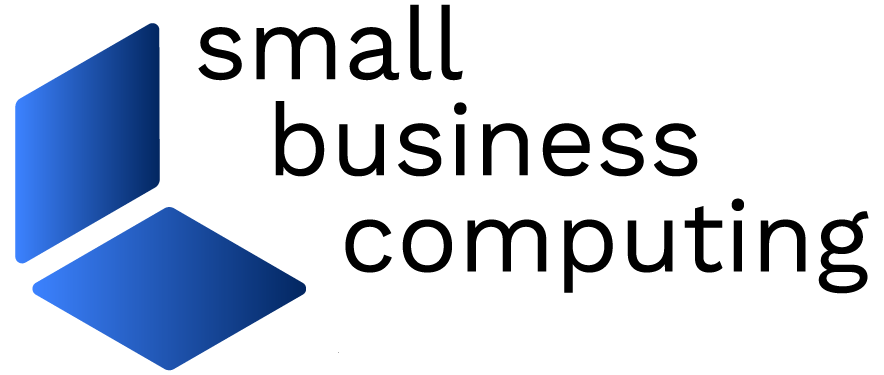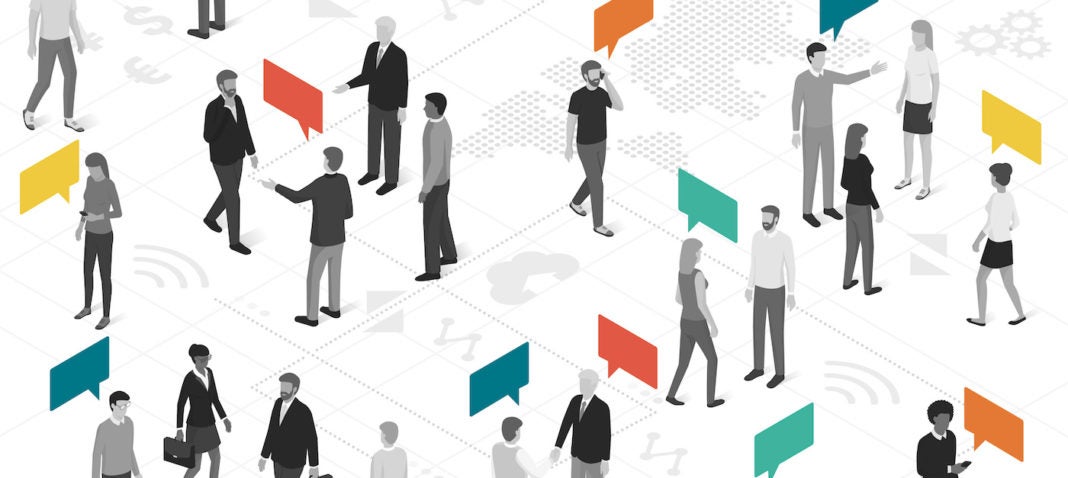Small businesses work tirelessly to attract new customers, but putting in the effort to retain those customers is just as important. However, it can be hard to keep track of all of your customers and provide them with a personalized experience. That’s where customer engagement software comes in.
Customer engagement is all about creating positive and inviting experiences for customers. In Salesforce’s research survey, 80 percent of customers said the experiences provided by a company are as important to them as the company’s products and services.
It’s no longer enough for your products and services to stand out. You also need your customer experience strategy to stand out as well. With the right customer engagement strategy, you can keep your customers loyal by providing the individualized service that they want.
Jump to:
- What is customer engagement software?
- CRMs vs. customer experience platforms
- Top customer engagement software comparison
- Key customer engagement software features
- How to choose the right customer engagement platform
What is customer engagement software?
Customer engagement software is a tool designed to manage customer communications across a variety of channels. It helps businesses engage their existing customers by soliciting feedback, incentivizing reviews and referrals, managing communications, and more.
Customer engagement software can help your business:
- Build customer loyalty and improve customer retention
- Identify at-risk customers that may need to be re-engaged
- Provide better service by collecting customer data, feedback, and analyzing their buying habits and preferences
These tools are particularly important for small businesses. Your small business will always have to deal with competition from larger companies in your market who have bigger marketing budgets and may be able to offer lower prices on products.
However, small businesses are better equipped to provide a more personal and human touch in their customer service. Customers like supporting small businesses and small business owners, but you need to keep them engaged so your business stays fresh in their minds.
CRMs vs. customer experience platforms
Customer engagement software is often confused with customer relationship management (CRM) software. These tools serve very important but different purposes.
CRMs
CRMs are used as databases to store information on your current and prospective customers. These databases can be used to streamline and record customer and sales outreach efforts including emails and phone calls. CRMs are extremely useful tools for sales teams.
However, CRMs are largely focused on creating efficiency in the sales and marketing departments. CRMs help employees stay organized, efficiently access the necessary information, and track ongoing projects.
The customer receiving an email sent through a CRM will probably not notice or care whether it was sent with HubSpot or Salesforce. The backend experience is different with each CRM system, but the difference in customer experience is minimal. You should still absolutely invest in a good CRM tool, but it is generally not a substitute for customer engagement software.
Keep reading: Best CRM Software for Small Business
Customer experience platforms
On the other hand, customer experience platforms are designed to help your team improve customer satisfaction, loyalty, and more.
For example, let’s think about customer satisfaction surveys. It’s a good idea to send a quick survey to new customers after they have received a product or service from you. Unlike in a sales email, the program used to create this customer survey will absolutely make a noticeable difference to the recipient. Many survey programs create cumbersome surveys that customers won’t want to complete.
A good customer engagement platform will give you tools to create a better customer experience with user-friendly options. You can design surveys with a 5-star scale, multiple-choice format, smiley or sad face, thumbs up or down, or other simple and efficient options that don’t require the recipient to tab through dozens of pages. A well-designed survey provides a positive experience and shows that you value your customers’ opinions, but a poorly designed survey may prove to be an annoyance.
Related: Defining the Customer Experience with a Customer Data Platform
Top customer engagement software comparison
| Communication management | Live chat | Feedback management | Gamification | Detailed analytics/reporting | Community management | |
|---|---|---|---|---|---|---|
| Zendesk | ✅ | ✅ | ✅ | ✅ | ✅ | ✅ |
| Delighted | ✅ | ❌ | ❌ | ❌ | ✅ | ✅ |
| Salesforce | ✅ | ❌ | ✅ | ✅ | ✅ | ❌ |
| Genesys DX | ✅ | ✅ | ✅ | ❌ | ✅ | ❌ |
Zendesk
Zendesk is a fairly comprehensive tool for managing customer communications. They have an organized help ticket system, live chat functionality, and content management features designed to allow customers to easily search for help articles written by your business. With Zendesk, you can engage customers through chat, social media, email, and phone and access in-depth reporting and analytics.
This is a good option for businesses with an established support team available to field customer questions. If you run a small business with a clear-cut product that doesn’t generally elicit many questions, Zendesk might be overkill.
Pros
- Versatile and feature-rich platform that allows companies to engage customers on mobile, websites, chat, and social media.
- Task and ticket system to keep customer complaints and concerns organized and ensure that nothing falls through the cracks.
- Integrates with a large number of productivity apps, CRMs, marketing tools, and social media applications.
Cons
- Some customers report delays or difficulties when contacting customer service. Their self-service resources are robust, but getting a live person on the phone for support can prove to be a frustrating experience.
- Reporting functionality is limited at lower subscription tiers.
Pricing
Zendesk is available in five editions:
- Foundational Support: $19/month per user
- Suite Team: $49/month per user
- Suite Growth: $99/month per user
- Suite Enterprise: $150/month per user
- Custom Packages: $215+/month per user
Delighted by Qualtrics
Delighted by Qualtrics is a customer engagement software focused on gathering customer feedback. Their key features revolve around customer surveys, feedback collection, and responding to feedback. Subscribers have many options for customizing surveys in order to get feedback on products, service interactions, and more.
You’ll notice that most entries on this list do not offer a free plan. Some offer free trials, but Delighted is the only one offering a fully free plan. While investing in your customer engagement strategy is important, small businesses don’t always have the budget for more expensive solutions. Be warned that the free plan is limited. However, this is a good starting point for soliciting customer feedback.
Small business owners can upgrade to a paid plan as they grow to gain access to expanded features and offerings. Since Delighted is owned by Qualtrics, transiting to Qualtrics’ enterprise customer engagement software is also quite simple.
Pros
- Offers a free plan.
- Great for customer engagement surveys.
- User-friendly design that will be easy for employees to learn.
Cons
- Reporting is somewhat limited, particularly at lower tiers.
- Users report some limitations with the integration options.
Pricing
Delighted is available in four editions:
- Free plan: Free
- Premium: $249 per month
- Premium Plus: $499 per month
- Enterprise: Pricing varies
Salesforce Experience Cloud
Salesforce is best known as CRM. However, the company also offers customer engagement software. This is a great option if you’ve realized that you actually need both CRM and customer engagement tools for your business.
Salesforce Experience Cloud features strong customer loyalty features to help you incentivize purchases and reward customers for engaging with your company. Customers can earn points, vouchers, and customized rewards for making purchases, leaving reviews, and more.
Pros
- Customizable and integrates with a large number of plug-ins and other tools.
- Wide range of features for customer engagement and employee engagement.
- Robust and customizable data reporting.
Cons
- Implementation can be time-consuming.
- If you do not have a large number of users, this is going to be pricier than many of the alternatives on this list.
- Not the most intuitive user interface. Very powerful and feature-rich, but expect a learning curve for inexperienced users.
Pricing
Salesforce Experience cloud is available in three editions:
- Customer Community: $250/month
- Partner Community: $500/month
- Employee Community: $25/month per user
Genesys DX (formerly Bold360)
Genesys DX is an AI-powered customer engagement platform. This software is a good option for small businesses that have limited customer service staff or prefer to automate some of their customer engagement activities.
Business owners or staff can pre-program responses to common questions and utilize the automated routing feature to make sure customers get in touch with the correct person right away.
The platform also has content management, customer segmentation, live chat, and self-service tools. Geneysys DX allows businesses to balance automation and hands-on customer service in an efficient manner while providing the information that customers need to make informed buying decisions.
Pros
- Flexible pricing model including a pay-per-hour option designed for employers with part-time employees.
- Provides access to real-time and historical data reporting.
- Strong chatbot, voicebot, and asynchronous web chat capabilities.
Cons
- Some organizations report that there is a steep learning curve.
- Some users have also noted that setup took longer than desired.
Pricing
Genesys DX is available in four editions:
- Genesys Cloud CX 1: $75/month per user or $0.68/hour per user
- Genesys Cloud CX 2:$110/month per user or $0.99/hour per user
- Genesys Cloud CX 3:$150/month per user or $1.35/hour per user
- Genesys DX: Customized packages, pricing will vary
Key customer engagement software features
Not all customer engagement tools are created equal. In fact, there’s actually a lot of variation in what is offered by these services. Customer engagement can take many forms and span across different platforms and mediums.
If you’re in the market for customer engagement software, it’s important to have a good grasp of what features you’ll need to meet the unique needs of your small business. Here are the top features to look for when selecting a customer engagement solution:
Customer communication management tools
Pay special attention to what platforms and communication methods each customer engagement software supports. The best way to build and nurture customer relationships is to use your customers’ preferred communication methods.
If a customer finds phone calls annoying or anxiety-inducing, you won’t get very far by calling them. Similarly, if they don’t use social media, it’s going to be hard to engage them in that avenue. Think about your customer base, and try to pick a platform with diversified communication tools.
Read more on eWeek: Contact Center Trends and Tech: Engagement is Omni-Channel
Live chat
Live chat is a great way to engage customers in real-time. Make your staff available to answer questions in a convenient chat feature rather than forcing customers to send an email and wait hours or days for a response.
Live chat can also be used to engage visitors on your website or Facebook business page. Proactively starting a chat with customers keeps them on your page longer and encourages them to ask questions.
Engaging customers while they’re browsing your site and have your products on their minds can help you close the sale.
Customer feedback management
Soliciting and responding to customer feedback is an integral part of a good customer engagement strategy. Look for a platform that offers customer feedback tools such as surveys as well as tools to track and analyze responses. Acting on the feedback and responding to customer complaints in a timely manner can improve your business’s reputation.
Gamification
Gamification is a tool that incentivizes customers by offering a prize or a sense of achievement for completing tasks. Customer loyalty programs are a popular form of gamification.
The examples below demonstrate how to use gamification to improve customer engagement and loyalty:
- Give customers specific challenges to complete in order to earn points or rewards. For example, the Starbucks App will assign short-term challenges that users can complete to earn extra rewards. The challenge may be to order a new menu item, increase their order value, or visit for three consecutive days. Participants can track their progress in the app. Allowing customers to view their progress, almost like they would in a video game, encourages them to push toward completion of the challenge.
- Create a sense of status and belonging by giving your top tier customers something extra. Use your customer engagement tool to identify your most active customers and send them a special promotion. It could be a quarterly coupon or discount, early access to your newest products before they launch, or an exclusive customer appreciation event held by your business for only the top customers.
- Reward customers for purchasing consistently. The most popular gamification option for small businesses is to provide a reward for making a specific number of purchases or spending a set dollar amount annually. This can be done in a digitized version of the punchcard method where the 10th purchase is free. Customers that spend a certain amount can also earn a coupon or access to a higher tier of the customer loyalty program.
Reporting and analytics
Customer engagement software is designed to help you learn more about your customers. To get the most out of this data, you’ll want to choose a software option with detailed reporting features. Many businesses prefer software that allows them to create customized reports for even easier data analysis and information sharing.
Read more: Small Business Reporting Software & Platforms
Community management
Community management tools help you stay in touch with your customer base and encourage them to share ideas. Community management can take place through social media by actively engaging with the comments on your posts and encouraging customers to share their own thoughts or ideas.
You can also designate a space on your website or create a Facebook group for your customer community. Customer engagement tools help you stay on top of the posts so that you don’t miss out on the conversation.
Related: 6 Best Practices for Social Media Customer Service
Churn management
No business likes to lose customers. Churn management allows businesses to keep track of their churn, or how many customers are no longer buying from your business.
Churn can look a little different depending on your business model. For subscription or membership-based services, churn is often tracked based on the number of customers that choose not to renew their subscription. For product-based services, customers are considered to have churned if they have not ordered for a set period of time.
Churn management features in customer engagement software help you track churn and target your customer outreach to draw past customers back in. Many businesses offer special deals to incentivize churned customers to reorder or rejoin.
It’s often easier to re-engage a customer that is already familiar with your offerings than it is to find and educate a new customer on your product or service. Thus churn management should be part of your small business strategy.
How to choose the right customer engagement platform
When deciding on a customer engagement software for your business, there are a few factors to weigh.
First, you should decide what features you will need based on your business’s needs. Consider your customer engagement strategy and what methods of communication you’d like to use. Depending on your customer demographic, you may need customer engagement software that has tools targeted towards social media and chat features. If your product is complex and technical, a tool like Zendesk that offers comprehensive self-service support features to guide customers through your product might be best.
The next biggest consideration is cost. Small businesses often have limited budgets, so you may have to start out with a more basic plan or a more affordable platform. Since many of these software services charge per user, it’s a good idea to make a list of the employees that will need a user account. This will give you a clearer picture of the true subscription cost.
Take the time to assess your needs and evaluate the pros and cons of each software option in order to determine which customer engagement software is right for you.
Read next: How to Leverage AR and VR for Better Customer Engagement


